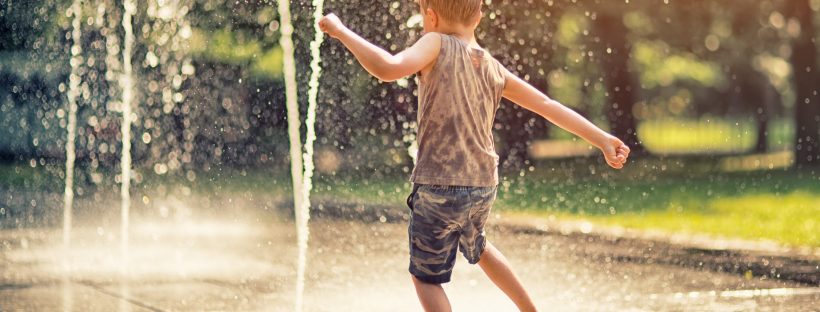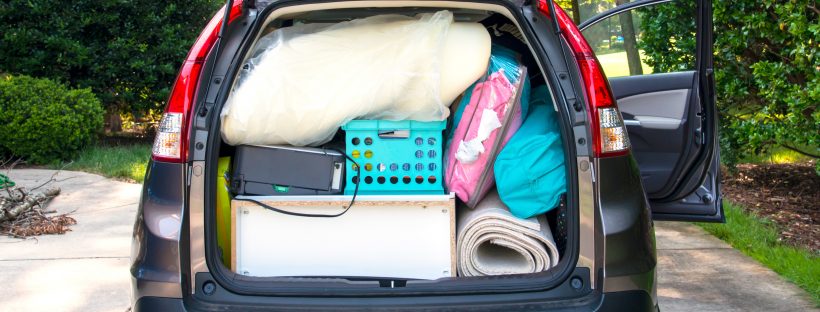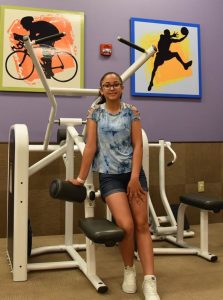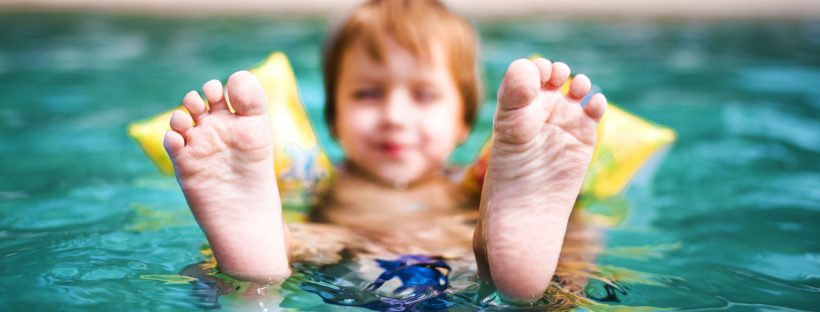Welcome to college: don’t forget to throw your health out the window and get ready for a stressful ride!
Isn’t that what a realistic college greeting would sound like? You move into your dorm and have piles of homework thrown at you while feeling the need to attend all the social events. You no longer have your parents monitoring your health and you don’t have time to do it yourself. This universal experience has created the myth of the “freshman 15,” which is the belief that college students gain 15 pounds during their freshman year. According to Verywell Mind, not all students gain the full 15 pounds. Which may seem like a good thing, but this gradual weight gain may lead to a pattern of weight gain that could lead to future problems.
Although the freshman 15 isn’t a necessary truth for everyone, it isn’t uncommon for students to gain a little weight during their four years in college and sometimes it leads to further weight gain after those four years.
Most college students don’t want to gain 15, or any, pounds their first year of college. I’m here to tell you that you don’t have to. Have no fear, I have found 15 solid tips to avoiding the freshman 15.
1. Get enough sleep
You may be tempted to stay up all night to work on a big project or finish that Netflix series, but it’s important for you to get at least 7 hours of sleep each night. This will increase your energy during the day and help you avoid late-night snacking. Plus, did you know that 6 hours of sleep a night can be like not sleeping at all?
2. Take advantage of the gym
You can help keep your weight down by getting some exercise. Chances are your school has some sort of recreation center that you can use to work out or play some sports. Take advantage of those facilities while they’re available to you. Mix up what you do so you don’t get bored.
3. Drink water
One simple idea is to follow the “8 x 8 rule” and try to drink eight, 8-ounce glasses of water each day. Some people may need to drink more, and some may need less. Most healthy people will get enough water if they just drink when thirsty.
According to the Centers for Disease Control and Prevention, water helps keep your body healthy and happy. Also, often when you want a soda or a snack, drinking a glass of water first may fill you up and prevent you from filling up on sugar and calories, which can lead to weight gain.
Not a fan of water? Add flavor to tap water with slices of cucumber, cinnamon sticks, apples, fresh cranberries or a sprig of mint.
4. Choose healthy snacks
There are lots of healthy alternatives to the typical dorm room snacks. Instead of those fatty potato chips, try a different finger food like grapes, cut up veggies, unsalted nuts, pita bread or whole grain crackers. Ditch the calorie-filled soda and go with water instead. Replace ice cream with a bowl of yogurt with some granola and fruit. Or, invest $20 or so in a popcorn popper and pop healthy treats to get you through that marathon study session.
5. Eat in moderation
ChooseMyPlate tells us that it’s important to have a balanced diet. Now that you’re in college, there’s nobody around to tell you not to eat the entire box of cookies, but that doesn’t mean you should. Eating healthy doesn’t mean completely depriving yourself of the wonderful things in life, like cookies or cake; it just means choosing to eat those things in smaller amounts along with healthy options to balance it out.
One quick trick? For meals, fill half your plate with fruits and veggies. The rest should be filled with whole grains (whole grain pasta, brown rice, etc.) and healthy proteins (fish, chicken, beans, etc.).
6. Eat when you’re hungry
This one may seem obvious, but there are many times when we eat because we’re bored or stressed or our friends are eating. If your body isn’t hungry, then you don’t need to fill it up with more food. Whenever you’re going to eat something, stop and think, “Why am I eating this?” If your answer is something other than you’re hungry, then put it back. If you’re really feeling stressed or bored, try going for a quick walk or calling up a friend for a chat.
7. Be intentionally active
Having a car on campus is great, but it doesn’t mean you need to drive to every class. That empties your wallet and keeps you from being active. Walk or ride your bike to class. Take the stairs instead of the elevator. Being active doesn’t always mean joining the track team. You can be active throughout the day by creating little habits during your everyday activities.
8. Schedule your meals
College life is a little chaotic and it’s easy to miss a meal here and there. If you schedule three meals each day, every five or six hours, it’ll make it a lot easier on you. Fit the schedule into your normal routine, even if that means breakfast isn’t until noon and dinner is at 9 pm. ChooseMyPlate has some great tips for planning your meals.
9. Join active clubs
Your college likely has numerous clubs for you to join. There are the well-known sports, but there are probably other options, too. You could join a club that goes hiking, dog-walking, kayaking, etc. There are lots of people who don’t like the traditional sports, so if you’d rather do something else, there’s probably a club for it. If there isn’t one already, start one!
10. Get college credit for being healthy
Most colleges have elective classes that allow you to be active, like these classes offered by Rochester Institute of Technology (RIT). You could take a workout class or class that involves a specific sport. A nutrition class would also be a good idea. This way, you can get college credit for being healthy!
11. Track your calories and know what you’re eating
When you’re eating in the dining hall, you never really know what went into the chicken surprise. Instead of blinding eating it, trying asking the dining hall staff for help. Maybe ask about the ingredients in a meal, or what else was used, as a way to determine calories.
Keeping track of your calories helps you to know what’s going into your body and how many calories you should actually be consuming. The MyFitnessPal app can be a great tool for helping you keep track of calories.
12. Drink your coffee black
College students are famous for relying on coffee to get through all their classes and activities. However, instead of loading it up with sugar, cream, and other flavors, take it black. It’s healthier and still caffeinated.
13. Manage your stress
We all know that between classes and social activities and sports and everything else; college can get a little stressful. This stress can have a negative effect on your mental and physical health. Pat Salzer, registered dietitian at Excellus BlueCross BlueShield said, “Eating well and exercising often is great, but chronic high stress can harm your health and cause weight gain.” If you work to manage your stress, it can benefit your health in so many ways, including your weight. You can work to manage stress by taking time to exercise, meditate or spend time with friends. Or, here are 15 ways to stop stress now.
14. Don’t drink or drink less
In case you didn’t know, alcohol contains calories and calories contribute to weight gain. An average 12-ounce can of beer can have about 150 calories. If you drink one beer per night, you are drinking around 1000 extra calories each week. According to Mayo Clinic, 3,500 calories equals about one pound of fat. Plus, when you spend a night drinking, the next morning’s hangover will probably land you on the couch instead of the gym. You can use this alcohol calorie calculator to figure out how many calories you are drinking and how that affects your weight.
15. Meet with your school’s health and wellness center
Colleges care about their students’ health and therefore usually have some sort of health and wellness center, like this one at RIT. Take advantage of this resource and meet with the staff there. They will help you figure out some steps to take to live healthier. They are there to help YOU. The information they supply you with will help you in and outside of college.
























